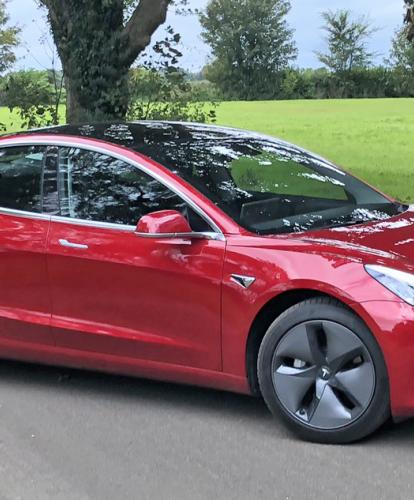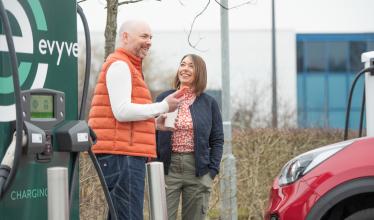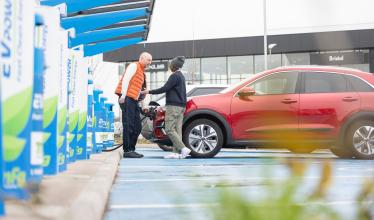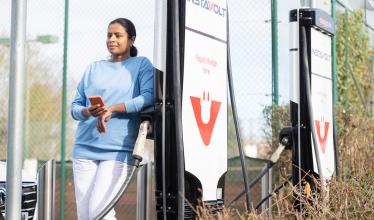Zapmap has got its hands on the Tesla Model 3. It’s a crucial model for the company and the industry as a whole, with the smallest Tesla aiming to get drivers into the pure-electric saloon from more conventional rivals. This version is the Model 3 Standard Range Plus – the entry level specification of not just the Model 3 range, but the Tesla brand itself.
Tesla Model 3 driving range
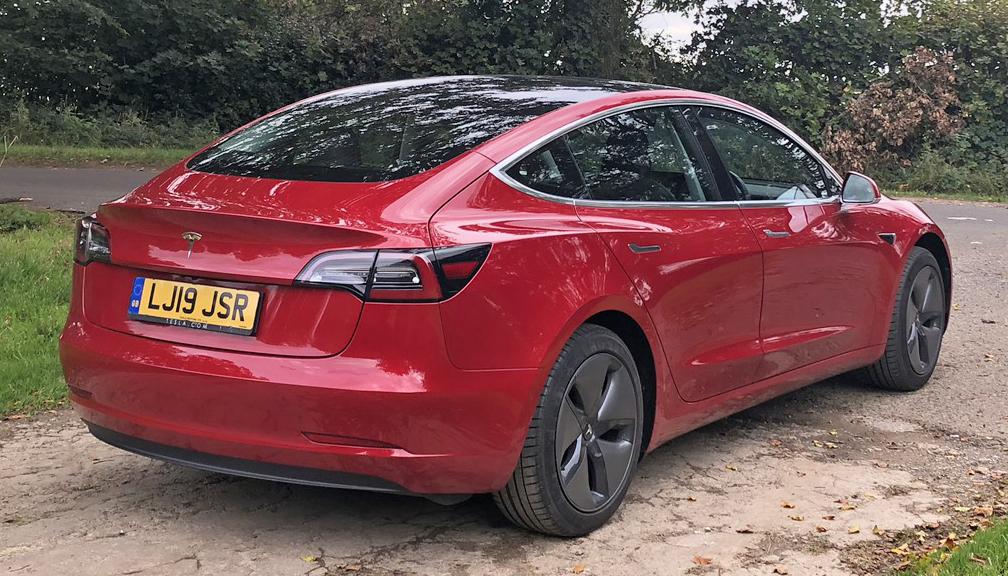
Let’s get one of the main factors covered first and foremost. The Model 3 had an official range of 254 miles on a charge. For those that require (or think they need) more, there is a Performance version with 329 miles or a Long Range model with 348 miles quoted. This version however is offers the least range of any Tesla currently on sale, but still comfortably outstrips the majority of EVs on sale, regardless of price.
With power coming from a 60 kWh battery, we found that in real-world conditions, the Model 3 tested was pretty bob-on in terms of range. A calculated 252 miles was possible from a charge using the trip figures provided by the car. That’s after covering more than 700 miles during our five days with it, and driving on motorways, A- and B- roads, and in cities, towns, & villages. As tests go, it should give a good example as to what a range of driving situations will offer in terms of range in early autumn. Mid-winter range will certainly be less than the 250-odd miles available, but summer months could see that stretched out a little further. Work on 250 miles as an average, and you’ll have a good idea as to how far you can travel on one charge.
Tesla Model 3 charging
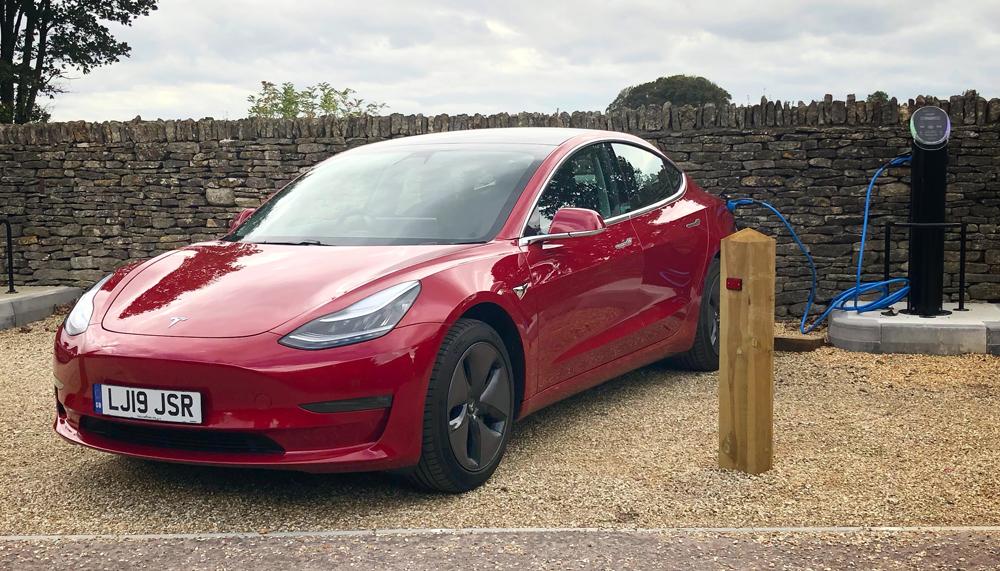
One key feature about the Model 3 for Tesla drivers is the introduction of CCS charging on a car from the American manufacturer. This has seen Tesla roll out CCS connectors on its Supercharger points to allow for charging off this standard. For non-Supercharger charging however, it has a far greater impact. While Tesla Type 2 models are able to charge at 120 kW+ on the company’s Superchargers, it requires an adaptor to charge off other units as fast. The opening up of Tesla models to CCS units means that there is potential to charge at ultra-rapid speeds away from the Supercharger sites, as well as keeping it in-house. For example, a 100kW, 150 kW, or 350 kw CCS ultra-rapid point can recharge the Model 3 almost as quickly, just as quickly, or potentially faster than the Tesla units. Before the roll-out of the Model 3, access to CCS units simply wasn’t viable for Tesla owners, who could rely on a CHAdeMO adaptor, but be limited to the 50 kW of the standard’s charge points.
Non-rapid charging is still possible through the normal Type 2 inlet – which makes up part of the CCS standard. This means that conventional public chargers can be accesses with a Type 2-to-Type 2 cable, and Tesla’s Destination chargers still work with the Model 3.
Tesla Model 3 performance
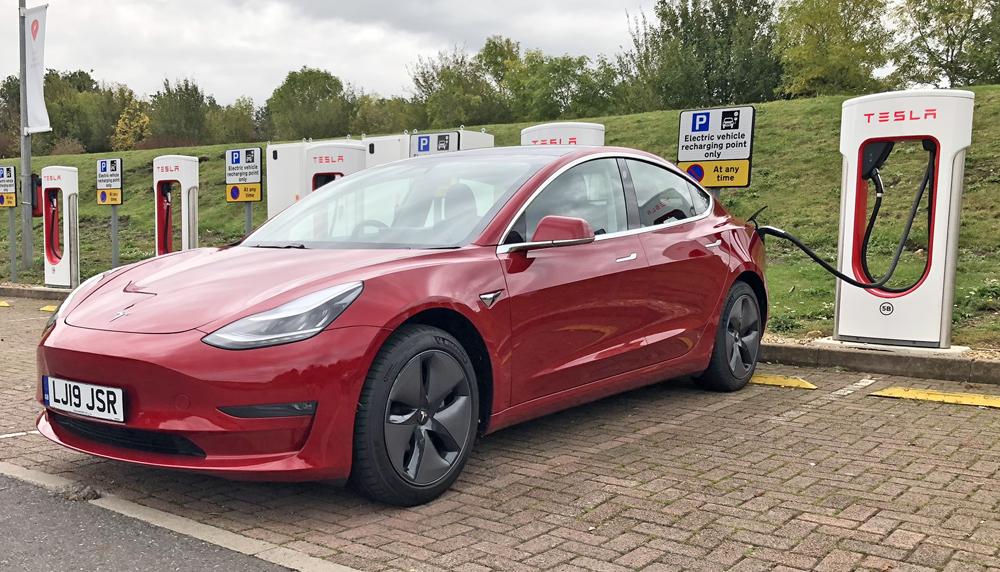
The Model 3 is a quick car, but this version doesn’t feel particularly rapid. It’s more a case of Tesla having spoilt us with the Model S and Model X, and a reflection that the entry level Model 3 has a single motor. As such, the 175 kW motor sitting on the rear axle will deliver a 0-62mph time of 5.3 seconds. It seems churlish to say that a sprint time of just over five seconds doesn’t feel fast, and obviously in relation to other cars, it really is brisk. Against the likes of the Model 3 Long Range and Performance however, with times of 4.4 and 3.2 seconds respectively, the Standard Range Plus will certainly feel slower. There’s no huge shove that pushes you into the seat that you get on the quicker versions, and it’s a sensation that those driving Teslas have come to expect.
That said, the Model 3 really is quick, and in real-world driving it’s clear the performance potential that electric motors offer. Even in this entry level powertrain, response from the motor is as instantaneous as you would expect, and anyone hopping in a Model 3 will be pleasantly surprised by it’s performance, even if they’re coming from saloons with a similar performance level. The pick-up of a motor can’t be matched by a similarly powered engine.
When driving, the Model 3 feels more agile than its larger stablemates. Despite a footprint that isn’t all that smaller when comparing Model S and Model 3 side-by-side, the latter car is definitely a more nimble proposition when driving. There’s greater visibility out front, with sharp creases over the wheel arches allowing you to pilot the Model 3 precisely through a corner. The suspension and steering are a little numb compared to well sorted internal combustion powered rivals such as BMW and Jaguar, but it’s a well balanced set-up. There’s plenty of grip, and the body roll is kept in check – even if you can feel the car working hard to keep the weight under control. It’s a good motorway cruiser, and the smaller size will be welcomed by those regularly driving in tight streets or car parks.
Tesla Model 3 practicality
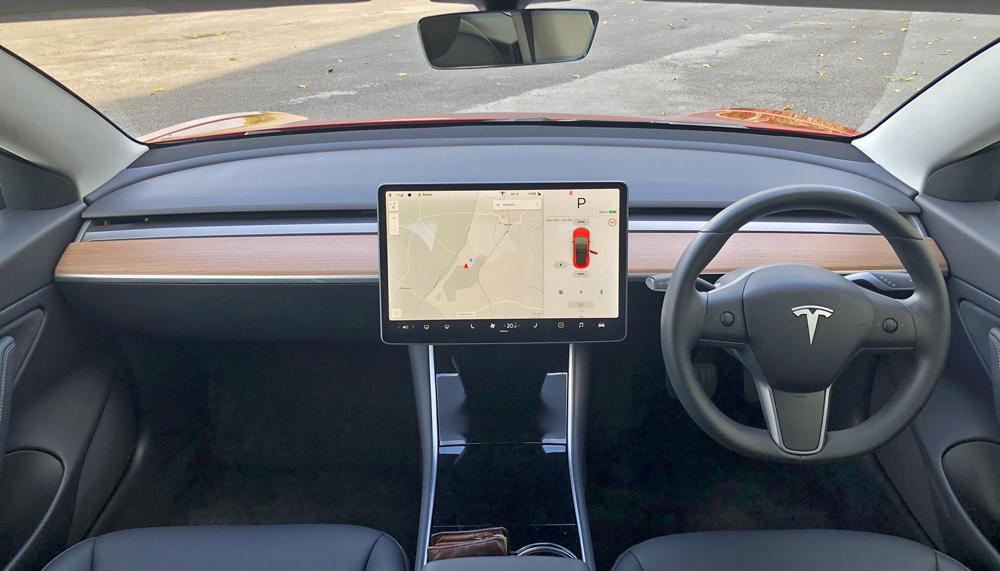
The cabin in the Model 3 is quite a statement piece from Tesla. It’s minimalist to the point that they’ve overdone it a little. The movement of a speedometer away from behind the steering wheel and onto the central screen is something that you get used to, but requires more effort than a quick flick of the eyes downward. Likewise, there are controls such as those for the windscreen wipers that need at least two prods of a button and a look down to see you’ve picked the right speed on the screen to get what you want. Before anyone mentions it, the Auto setting doesn’t get it right enough of the time to allow me to just leave it to the car to look after things.
These elements could be sorted by a head-up display and a switch on the indicator stalk respectively – both of which would retain the car’s minimalist design but add functionality. As such, there’s a feeling that it’s form over function for some elements, which is a bit of a shame. Not least because the 15-inch touchscreen infotainment system is excellent. Easy to use, with clear graphics and good response from inputting commands, the system is a credit to Tesla.
Other elements? Well, space is very good inside, with enough room for four adults comfortably, and a fifth if those in the back are friendly. Head room will feel a bit small for those over six-foot in the rear, as the sloping roofline cuts into the space a bit here. Leg room is very good however, and buyers get a good sized boot too. There’s also the front load space under the bonnet to be considered, which is ideal for the charging cables. Interior storage space is covered by a couple of large cubby holes in the centre unit, and a reasonably sized glovebox.
Tesla Model 3 verdict
So is the Tesla Model 3 the world beating car that it is pitched as by some? In a word, no. But it is very good. There are a few issues that could be sorted in terms of controls and design, plus the build quality in places doesn’t match up to a £40,000 car. It is extremely good however, and will convert a large number of drivers to Tesla from the more conventional executive saloon builders from Germany, Britain, and Japan.
The range available even in this Standard Range Plus version is highly useful and I didn’t ever finding myself longing for more. The Tesla Supercharger network is a great boon for potential customers, and the addition of CCS charging means that a number of new ultra-rapid chargers are opened up to Tesla drivers – with more being added all the time. The interior is a great place in which to sit, and there are some lovely design touches about the place. Overall then, a very good gateway into the Tesla range and EV ownership. Not perfect, but still superb.
